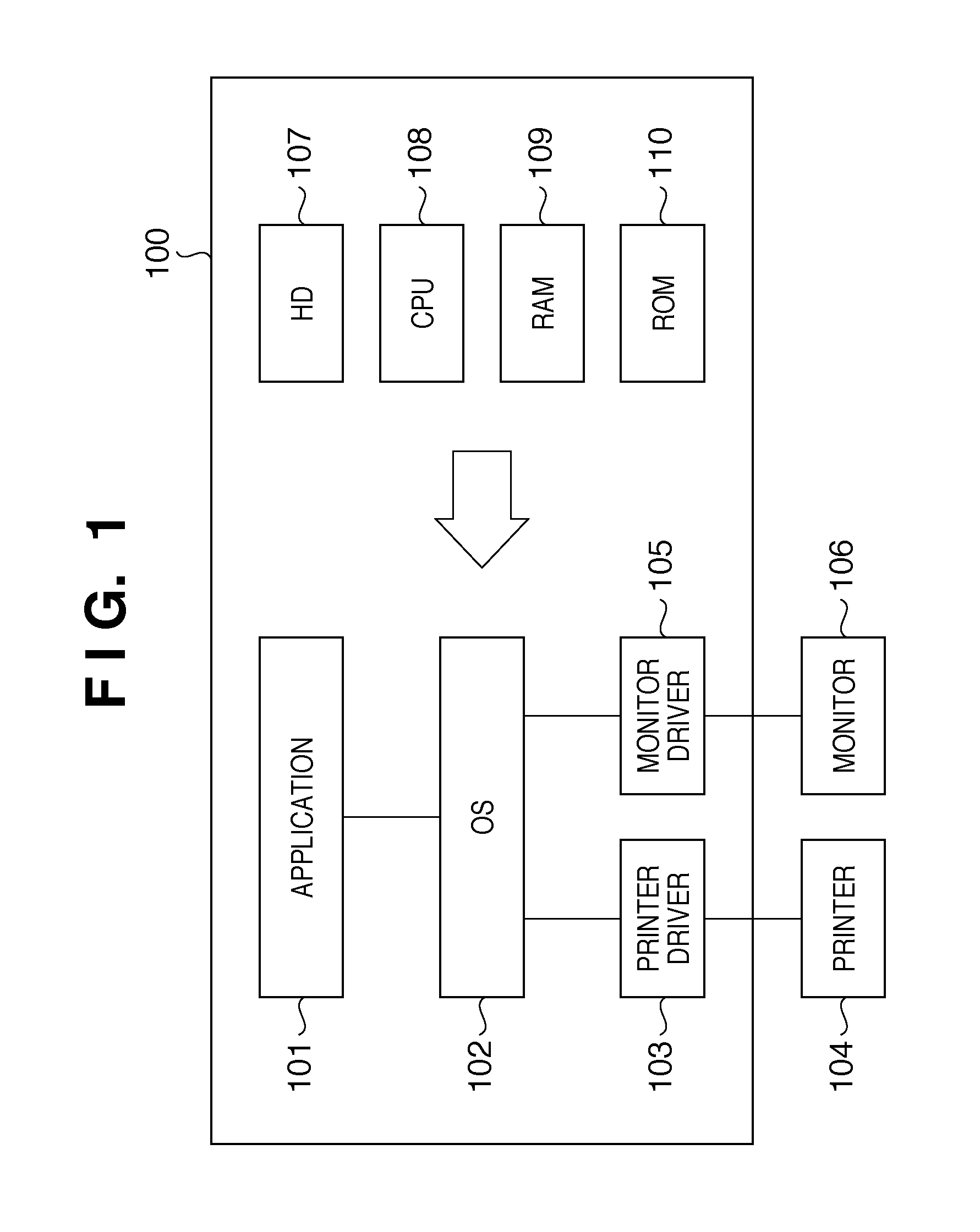Inkjet printing apparatus and printing method
a printing apparatus and printing method technology, applied in the direction of printing, electrical apparatus, spacing mechanisms, etc., can solve the problems of uneven difference, decrease in throughput, and image quality degradation
- Summary
- Abstract
- Description
- Claims
- Application Information
AI Technical Summary
Benefits of technology
Problems solved by technology
Method used
Image
Examples
first embodiment
[0126]In the first embodiment, printing is done using a combination of masks prepared in a memory in accordance with the position where an image is printed. In the first embodiment, 4-pass printing is executed to complete an image by four scanning operations with cyan (C), magenta (M), yellow (Y), and black (K) inks.
[0127]Each process of 4-pass printing will be described first with reference to FIG. 9. The printhead has a nozzle array (printing element array) of 1,280 nozzles for each color, and the nozzle arrays of the respective colors are juxtaposed.
[0128]In first print scanning 9-001, printing is done as reverse printing by discharging C, M, Y, and K inks in the order named from ¼ nozzles (320 nozzles) at the leading end of the nozzle array. After an image is printed to the right end in FIG. 9, the printhead scanning direction is reversed, and paper is fed by an amount corresponding to a ¼ width (320 pixels) of the nozzle array.
[0129]In second print scanning 9-002, printing is d...
second embodiment
[0146]In the second embodiment, the same apparatus as that in the first embodiment is used to receive multilevel image data from a PC, divide it without converting it, and binarize the divided multilevel data when converting it into print data used for printing by each pass. FIG. 17 is a block diagram showing main data processes till printing in the second embodiment.
[0147]A printing method according to the second embodiment will be described with reference to the flowchart of FIG. 20.
[0148]Similar to the first embodiment, image data and printing control information are read in step S110. In the second embodiment, however, the image data is not binarized in this step. Steps S120 to S150 are the same as those in the first embodiment.
[0149]In step S160, the multilevel image data read in step S110 is divided into multilevel data for printing by respective passes on the basis of the printing ratios of these passes set in step S150. The divided multilevel image data is converted into bin...
third embodiment
[0151]The third embodiment will describe a case where input of image data from a PC delays or a case where an inter-pass time difference larger than one in normal printing is generated owing to the maintenance of the printhead. For example, after printing starts at equal printing ratios in all print scanning operations on the basis of image data for which no printing ratio allocation need be changed, the printhead retracts to a predetermined position during printing owing to the above-mentioned reason. The present invention is applicable to even this case. The third embodiment will exemplify a case where data transfer from a PC delays because of any reason and a 5-sec standby time is generated after the end of the first print scanning during printing.
[0152]In this case, printing has ended by 25% by the first print scanning. At this time, the remaining 75% of printing is executed by three remaining print scanning operations. The printhead stands still at the right end of the image du...
PUM
 Login to View More
Login to View More Abstract
Description
Claims
Application Information
 Login to View More
Login to View More - R&D
- Intellectual Property
- Life Sciences
- Materials
- Tech Scout
- Unparalleled Data Quality
- Higher Quality Content
- 60% Fewer Hallucinations
Browse by: Latest US Patents, China's latest patents, Technical Efficacy Thesaurus, Application Domain, Technology Topic, Popular Technical Reports.
© 2025 PatSnap. All rights reserved.Legal|Privacy policy|Modern Slavery Act Transparency Statement|Sitemap|About US| Contact US: help@patsnap.com



